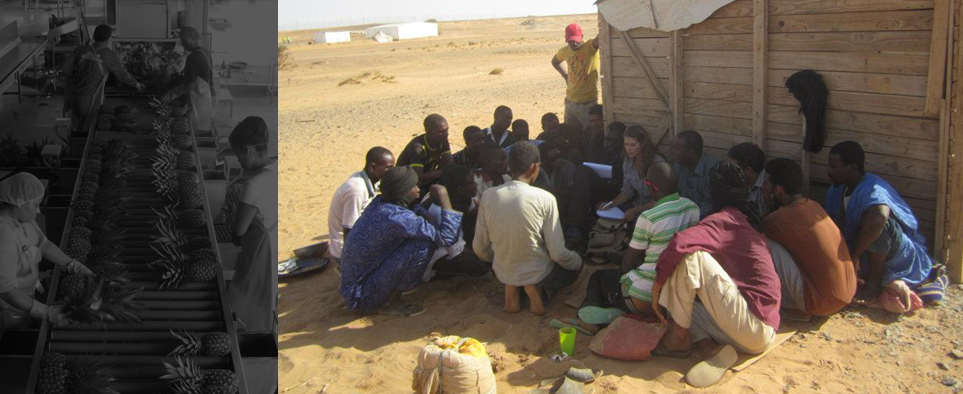Community-led HRIA Guidance and Tools
- Oxfam (2016) Community Voice in Human Rights Impact Assessments.
ABSTRACT: “Human rights impact assessments (HRIAs) are intended to minimize human rights risks, lessen adverse impacts, and strengthen positive outcomes of business investments on affected populations. For an HRIA to fulfill this purpose, it must consider the perspectives of everyone affected by a company’s operations, project, products, or services. But all too often, companies ignore this critical input, instead opting for top-down tools that fail to capture communities’ assertions. In doing so, they forfeit the opportunity to minimize human rights violations and costly conflicts… This paper: Describes why HRIAs are an essential element of the due diligence process stipulated in the United Nations Guiding Principles on Business and Human Rights; • Explains the business case for seeking communities’ expectations and assertions of rights during an HRIA; • Includes case studies of the costs of company failure to engage, as well as case studies of company-led HRIAs, identifying where and why companies have fallen short in reaching out to communities and providing rare examples of companies that have gone further; • Includes case studies of community-based HRIAs, demonstrating the importance of hearing from communities themselves regarding companies’ impacts on their human rights; • Highlights elements of the Getting It Right tool to guide communities through the process, and issues a call to scale up such efforts; • Discusses the possible benefits, constraints, and funding possibilities of a parallel company- and community-led process, or hybrid approach, where companies and communities co-own the HRIA process; • Provides recommendations to companies, investors, and governments; and • Provides guidance for conducting a thorough HRIA process.”
- Oxfam and FIDH (2016) Getting It Right: Community Based Human Rights Impact Assessment Tool and Training Manual.
ABSTRACT: “While various tools are at the disposal of companies for assessing risks related to their investments, very few are designed specifically to help communities affected by investment projects (and their support organizations) to identify the impacts of private industries on human rights. Often disempowered by governments and companies, the concerns of communities affected by private investments are commonly underrepresented. Within the growing constellation of institutions working on business and human rights, there is a very public recognition of the need for more Human Rights Impact Assessment (HRIA) tools and a way for community stakeholders to engage more effectively. Oxfam is working with its network of communities, practitioners, and advocates to increase awareness and use of a powerful tool, known as Getting it Right, created by the Canadian organization Rights and Democracy. This tool addresses both of these demands. The Getting it Right tool is a dynamic participatory approach for analyzing the human rights impacts of private and public foreign investments. It enables communities and the organizations that support them to identify human rights impacts, propose responses, and engage government and corporate actors to take action to respect human rights. The tool focuses on local communities as experts and advocates.”
- Oxfam and Rights & Democracy (2010) Community-based Human Rights Impact Assessments: Practical Lessons.
ABSTRACT: “In March 2010, Rights & Democracy, Oxfam America, and the International Federation for Human Rights (FIDH) sponsored a global learning event that brought together 13 civil society organizations engaged or interested in community-based human rights impact assessments (HRIAs) of private investments. For four days, participants exchanged their experiences using “Getting It Right,” a dynamic tool developed by Canada-based Rights & Democracy. Designed especially for communities and their support organizations, the tool enables teams to conduct HRIAs of private investment projects, such as infrastructure projects, agro-industry, dams, extractive industries, and other initiatives. This report summarizes key lessons learned and recommendations from participants, based on their pilot experiences in Bolivia, Columbia, Ecuador, Peru, the Philippines, and the United States.”
- Rights & Democracy (2004) Getting It Rights Human Rights Impact Assessment Guide (Later converted to Oxfam et al.’s Community Based HRIA Tool).
ABSTRACT: “Communities wanting to undertake their own human rights impact assessments require appropriate assessment tools. Rights & Democracy has therefore developed this guide to assist them and the civil society organizations they collaborate with. This assessment guide can also be used by other stakeholder groups, including business and government, who are interested in applying a community-based participatory approach to their work… This guide is a step-by-step process that allows assessment teams to take stock of the positive and negative human rights impacts of an investment project. Throughout the steps outlined below, information and additional references are provided including reference documents on human rights, examples of research techniques, relevant websites, and details on where to find specific information.” The six steps covered are: 1. Preparation; 2. Legal framework; 3. Adapting the guide; 4. Investigation process; 5. Analysis and report; and 6. Engagement monitoring and follow up.
- Rights & Democracy (2007) Human Rights Impact Assessments for Foreign Investment Projects: Learning from Community Experiences in the Philippines, Tibet, the Democratic Republic of Congo, Argentina, and Peru.
ABSTRACT: “This is the report of a three-year research project that developed a draft methodology for human rights impact assessments and applied it in selected case examples. The report includes an overview of the debate about corporate accountability and human rights, a summary of the approach adopted by the project’s international advisory committee and the results of the five case studies.”


